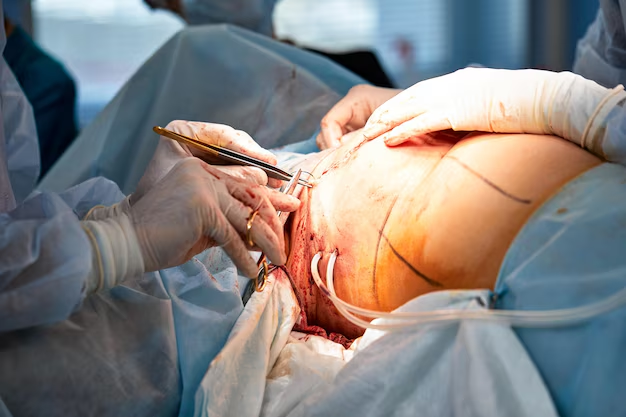Understanding Strenuous Activities and Their Implications After Cataract Surgery
Cataract surgery is a common procedure that restores vision by removing the clouded lens of the eye and replacing it with an artificial one. However, as with any surgical procedure, the recovery phase is crucial to ensure the best possible outcome. One critical aspect of post-operative care is understanding what constitutes "strenuous activity" and why it's important to avoid such activities.
The Importance of Proper Recovery
Why Rest Matters
After cataract surgery, the eye requires time to heal. Resting allows the body to recover naturally, reducing the risk of complications such as infection or lens dislocation. Avoiding strenuous activities during this period helps protect the eye while it heals, ensuring that the results of the surgery are not compromised.
Typical Recovery Timeline
Patients often notice an improvement in vision within a few days post-surgery, but complete recovery can take several weeks. During this period, the eye is still sensitive, and any stress or strain can interfere with the healing process.
Defining Strenuous Activity
Understanding what activities are considered strenuous is vital for making informed decisions during recovery. Strenuous activities are those that put significant stress on the body, particularly impacting the eyes after cataract surgery. These can include a range of physical and even mental tasks.
Physical Activities
Heavy Lifting and Straining: Activities like lifting heavy objects or rigorous exercises are prime examples of what to avoid. Not only do they increase blood pressure, but they may also cause strain in the eyes affecting the surgical site.
Exercise and Sports: Activities such as running, swimming, or any contact sports are considered strenuous due to the potential for accidental impacts and the physical demands they place on the body. Swimming presents an additional risk of water (and possible contaminants) reaching the eye.
Household Chores: Even routine activities like vacuuming or gardening can be too strenuous if they involve bending, lifting, or any vigorous movement.
Mental Stress and Strain
Extended periods of screen time can lead to eye strain and fatigue, which should be minimized during recovery. While not "strenuous" in a physical sense, high mental stress can equally impede healing due to increased overall stress levels.
Post-Surgery Dos and Don'ts
Safe Practices
- Rest Adequately: Ensure that you have enough rest to support recovery.
- Gentle Activities: Focus on very light tasks that do not involve straining or direct eye impact.
- Follow Medical Advice: Always adhere to post-operative guidelines provided by healthcare professionals.
Activities to Avoid
- Exercise caution with any activity that involves bending below the waist, as it can increase pressure in the head and eye.
- Avoid swimming pools, hot tubs, and saunas: Until the eye has healed sufficiently to prevent infection.
- Hold off on heavy lifting or intense workouts: These can cause unnecessary strain on your eyes and can potentially cause harm.
Potential Risks of Resuming Activities Too Early
Increased Pressure
Strenuous activities, particularly those that involve bending and lifting, can increase intraocular pressure, potentially leading to complications such as displaced lenses or increased swelling.
Risk of Infection
Activities involving dust, dirt, or water increase the chances of introducing irritants or bacteria into the eye, leading to infection.
Delayed Healing
The stress from physical exertion can delay the healing process, negating the benefits of the surgery. It's crucial to mitigate any action that could lead to inflammation or hinder recovery.
Promoting a Smooth Recovery Process
To ensure a smooth recovery journey, patients should consider additional precautions:
Eye Protection
- Wear protective eyewear: Given the wind and sun exposure that can irritate the eye.
- Sunglasses offer a dual benefit—protecting eyes from the sun and acting as a barrier against wind and debris.
Nutritional Support
- Stay hydrated and consume a nutritious diet rich in vitamins C and E, omega-3 fatty acids, and zinc, which support eye health.
Regular Check-Ups
- Schedule follow-up appointments with your ophthalmologist to ensure healing is on track and address any concerns promptly.
Recognizing Warning Signs
It is essential to stay alert for any unusual symptoms post-surgery:
Symptoms to Watch
- Increased redness or pain: Suggests possible infection or complications.
- Blurred or distorted vision: If persistent, warrants a prompt medical review.
Professional Input
Consulting a healthcare professional immediately can prevent further issues and ensure a smooth recovery.
Empower Your Recovery Journey
Following cataract surgery, understanding what's considered strenuous activity is crucial for recovery. By avoiding specific physical and mental stresses, patients can significantly influence their healing process and the overall success of the surgery.
Key Takeaways for a Successful Recovery 📝
- 🏋️♂️ Heavy Lifting? Avoid it throughout the recovery period to prevent stress on the eyes.
- 🖥 Screen Time: Minimize prolonged periods in front of screens to reduce eye strain.
- ☀️ Sun and Wind Protection: Wear sunglasses to prevent irritation.
- 🥗 Nutrition and Hydration: Support your body’s natural healing processes through a balanced diet.
- ⏰ Follow Up: Regular check-ups are essential for tracking recovery progress.
Remember, a careful approach to post-surgery activities can vastly enhance recovery outcomes, safeguarding the newfound clarity in vision and maintaining overall eye health. From consulting professionals to acknowledging the importance of rest and eye protection, empowering your recovery involves informed and proactive choices.
